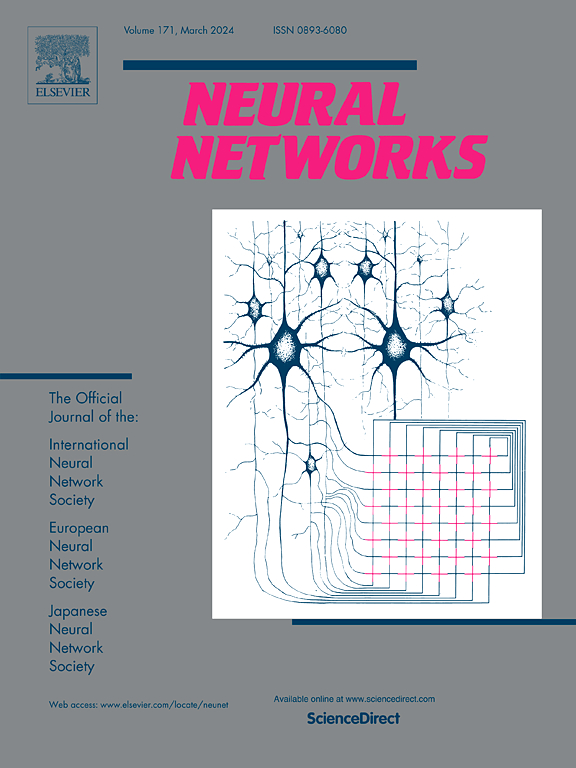Recovering Permuted Sequential Features for effective Reinforcement Learning
IF 6
1区 计算机科学
Q1 COMPUTER SCIENCE, ARTIFICIAL INTELLIGENCE
引用次数: 0
Abstract
When applying Reinforcement Learning (RL) to the real-world visual tasks, two major challenges necessitate consideration: sample inefficiency and limited generalization. To address the above two challenges, previous works focus primarily on learning semantic information from the visual state for improving sample efficiency, but they do not explicitly learn other valuable aspects, such as spatial information. Moreover, they improve generalization by learning representations that are invariant to alterations of task-irrelevant variables, without considering task-relevant variables. To enhance sample efficiency and generalization of the base RL algorithm in visual tasks, we propose an auxiliary task called Recovering Permuted Sequential Features (RPSF). Our method enhances generalization by learning the spatial structure information of the agent, which can mitigate the effects of changes in both task-relevant and task-irrelevant variables. Moreover, it explicitly learns both semantic and spatial information from the visual state by disordering and subsequently recovering a sequence of features to generate more holistic representations, thereby improving sample efficiency. Extensive experiments demonstrate that our method significantly improves the sample efficiency and generalization of the base RL algorithm and outperforms various state-of-the-art baselines across diverse tasks in unseen environments. Furthermore, our method exhibits compatibility with both CNN and Transformer architectures.
为有效的强化学习恢复叠加序列特征
将强化学习(RL)应用于现实世界的视觉任务时,需要考虑两大挑战:样本效率低下和泛化能力有限。为了应对上述两个挑战,以往的研究主要侧重于从视觉状态中学习语义信息,以提高采样效率,但并没有明确学习其他有价值的方面,如空间信息。此外,它们通过学习与任务无关变量变化不变的表征来提高泛化能力,而不考虑与任务相关的变量。为了提高基础 RL 算法在视觉任务中的采样效率和泛化能力,我们提出了一项名为 "恢复序列特征(RPSF)"的辅助任务。我们的方法通过学习代理的空间结构信息来增强泛化能力,从而减轻任务相关变量和任务无关变量变化的影响。此外,它还通过打乱和随后恢复一系列特征来生成更全面的表征,明确地从视觉状态中学习语义和空间信息,从而提高采样效率。广泛的实验证明,我们的方法显著提高了基本 RL 算法的采样效率和泛化能力,并在未知环境下的各种任务中表现优于各种最先进的基线算法。此外,我们的方法还与 CNN 和 Transformer 架构兼容。
本文章由计算机程序翻译,如有差异,请以英文原文为准。
求助全文
约1分钟内获得全文
求助全文
来源期刊

Neural Networks
工程技术-计算机:人工智能
CiteScore
13.90
自引率
7.70%
发文量
425
审稿时长
67 days
期刊介绍:
Neural Networks is a platform that aims to foster an international community of scholars and practitioners interested in neural networks, deep learning, and other approaches to artificial intelligence and machine learning. Our journal invites submissions covering various aspects of neural networks research, from computational neuroscience and cognitive modeling to mathematical analyses and engineering applications. By providing a forum for interdisciplinary discussions between biology and technology, we aim to encourage the development of biologically-inspired artificial intelligence.
 求助内容:
求助内容: 应助结果提醒方式:
应助结果提醒方式:


